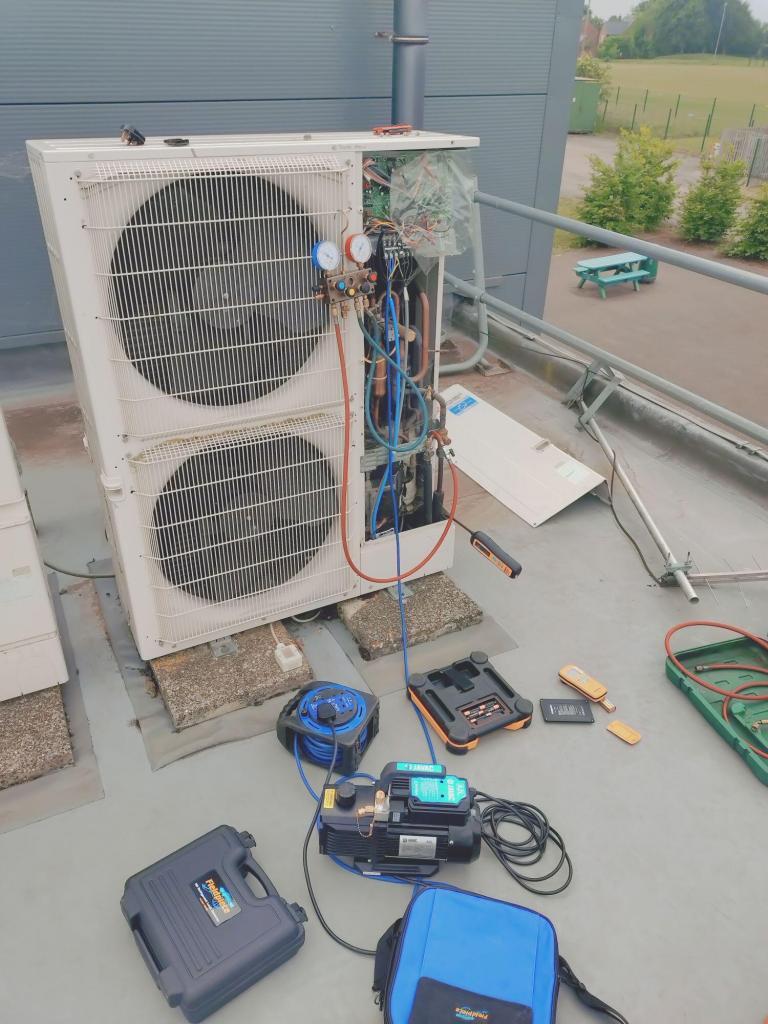Air conditioning systems, ubiquitous in modern homes, vehicles, and commercial buildings, operate on a delicate balance of pressure and refrigerant. Maintaining this balance is crucial for efficient operation, optimal cooling performance, and environmental responsibility. Two fundamental aspects of air conditioning maintenance that directly impact these factors are pressure testing and leak testing. While often discussed together, they serve distinct but complementary roles in ensuring the integrity and functionality of an AC system.

Pressure testing, typically performed with nitrogen, is a proactive measure designed to identify potential weaknesses or structural flaws in the AC system’s components before they are charged with refrigerant. The process involves introducing an inert gas, usually nitrogen, into the evacuated system at a pressure significantly higher than its normal operating pressure. This elevated pressure stresses the system’s pipes, hoses, seals, and connections, making any weak points or existing cracks more apparent. By applying this “overpressure” test, technicians can pinpoint potential failure sites that might otherwise go unnoticed during a simple vacuum test. A stable pressure reading over a defined period indicates the system’s structural integrity, providing confidence that it can safely contain the refrigerant once introduced. Conversely, a drop in pressure signals a leak, necessitating further investigation and repair before proceeding.
Leak testing, on the other hand, is a reactive diagnostic procedure aimed at locating and confirming the presence of refrigerant leaks.

Refrigerant is a potent greenhouse gas, and its release into the atmosphere contributes to climate change. Therefore, detecting and repairing leaks is not only essential for system performance but also for environmental protection. Various methods are employed for leak detection, each with its own advantages and limitations. Electronic leak detectors, the most common tools, use sensors to identify refrigerant molecules escaping from the system, often indicating their presence with an audible alarm or visual display. Ultraviolet (UV) dye leak detection involves injecting a fluorescent dye into the refrigerant, which then escapes with the refrigerant at the leak site, becoming visible under a UV light. Soap bubble solutions can also be used, where bubbles form at the point of leakage when applied to suspected areas. Advanced techniques like ultrasonic leak detectors, which detect the sound of escaping gas, are also employed in certain scenarios. Once a leak is identified, the affected component can be repaired or replaced, preventing further refrigerant loss and ensuring efficient operation.

The relationship between pressure testing and leak testing is symbiotic. Pressure testing establishes the foundational integrity of the system, minimizing the likelihood of immediate leaks upon charging. If a pressure test reveals a drop, it immediately indicates a leak, prompting the technician to proceed with leak detection methods to pinpoint its exact location. Conversely, if an AC system is underperforming or losing cooling capacity, a leak test is the first step to diagnose refrigerant loss, which may then be followed by a repair and subsequent pressure test to confirm the fix.
In conclusion, air conditioning pressure and leak testing are indispensable practices in the installation, maintenance, and repair of AC systems. Pressure testing proactively verifies the structural soundness of the system, preventing premature failures and refrigerant loss. Leak testing, on the other hand, reactively identifies and locates existing refrigerant escapes, crucial for both system performance and environmental stewardship. Together, these procedures ensure the efficient, reliable, and environmentally responsible operation of air conditioning systems, contributing to comfort and sustainability in our increasingly climate-conscious world.
